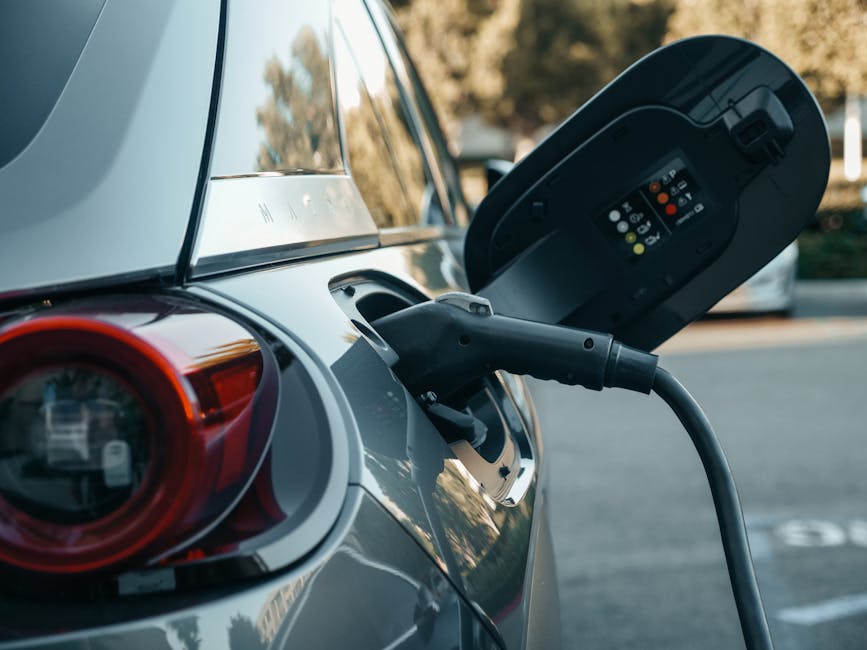Solid-State Batteries Are Ready for the Spotlight
Why Solid-State Is a Big Deal
Solid-state batteries are emerging as a transformative technology for the future of energy storage. Compared to traditional lithium-ion, they offer several critical advantages:
- Faster charging capabilities
- Longer battery lifespan
- Improved safety with reduced risk of overheating or combustion
These improvements could resolve many of the limitations that have held back battery innovation for years.
Mass Production and Market Momentum
Until recently, solid-state batteries remained in the research and development phase. Now, major players like Toyota, Samsung, and QuantumScape are entering mass production. Industry momentum is building quickly as supply chains mature and commercial-scale manufacturing becomes viable.
- Toyota and other automakers are investing heavily in solid-state platforms
- Pilot production lines are already operational
- Early consumer products expected within the next few years
Impact on Key Sectors
The shift to solid-state will ripple across multiple industries:
- Electric Vehicles (EVs): Vehicles using solid-state batteries could offer greater range, faster refueling times, and improved safety ratings.
- Grid Storage: Utility-scale installations can benefit from longer energy cycles and safer operation.
- Portable Tech: Smartphones, laptops, and tablets could become lighter and more efficient with fewer overheating issues.
A Boost for Wearables
Wearable technology stands to gain significantly from this innovation. More compact energy cells that hold longer charges and reduce bulk could lead to new categories of wearables beyond smartwatches.
- Thinner, lightweight designs for fitness and health devices
- Longer operation times between charges
- New form factors that aren’t possible with today’s lithium-ion limits
For more on next-gen wearable devices, check out What’s Next After Smartwatches.
Green Hydrogen: From Hype to Scalable Reality
Green hydrogen has long been positioned as a vital piece of the clean energy puzzle. In 2024, it’s moving from concept to practicality thanks to major technological gains and infrastructure advancements.
Pushing Efficiency Forward
One of the biggest barriers to green hydrogen adoption has been the efficiency of the electrolysis process. But that is changing quickly:
- New-generation electrolyzers are reaching higher efficiency rates, significantly reducing the energy cost per kilogram of hydrogen.
- Innovations in PEM (Proton Exchange Membrane) and solid oxide electrolyzers are closing the gap between lab performance and commercial application.
- Operational lifespans have increased, making production more economically viable over time.
Clearing Infrastructure Hurdles
Transporting and storing hydrogen has historically been a technical and economic challenge. New methodologies are unlocking scalability:
- Liquid organic hydrogen carriers (LOHCs) and compressed storage systems are making long-distance transport safer and cheaper.
- Pipeline retrofitting allows some existing natural gas infrastructure to be adapted for hydrogen use.
- Modular, on-site hydrogen storage systems are emerging, reducing the need for large-scale infrastructure upfront.
Expanding Real-World Applications
While hydrogen has often been associated with fuel cell vehicles, its potential as a clean energy carrier goes far beyond the road:
- Industrial heat: High-temperature use in steel, cement, and chemical manufacturing, where electrification is not always feasible.
- Residential and commercial heating: Pilots in blended hydrogen gas grids show promise for decarbonizing heat.
- Backup power and grid balancing: Hydrogen-powered fuel cells provide reliable alternatives to diesel generators for data centers and critical infrastructure.
Green hydrogen is now being positioned as a multi-sector solution, no longer just a futurist idea. As production methods get cleaner and logistics evolve, expect to see hydrogen become a functional part of the global energy landscape.
Introduction
Vlogging didn’t just survive the digital chaos of the past few years—it adapted. Inflexible formats and one-size-fits-all influencers lost ground. Meanwhile, vloggers who stayed agile, leaned into authenticity, and embraced platform shifts managed to not only hang on but grow. They experimented with form, got smarter about storytelling, and built loyal corners of the internet where people still want to tune in.
Looking ahead to 2024, the ground is moving again. Algorithms are getting pickier. Audiences are burned out on fluff. New tech is changing how videos are made and shared. What worked—even six months ago—won’t cut it now. For creators, it’s time to recalibrate. Raw frequency is out. Purpose, speed, and value are in. The vloggers who move fast, stay sharp, and keep it real are the ones who’ll win this year.
AI is quietly reshaping how the world uses energy. It’s not flashy, but it’s effective. Behind the scenes, advanced algorithms are optimizing power distribution in real time. That means electricity flows where it’s needed most, when it’s needed. The result? Less waste, better performance, and a more balanced grid.
Microgrids are stepping up too. Think of them as independent energy hubs that stay online when the main grid stumbles. In a world where climate events hit harder and more often, these systems act as local fail-safes. They’re not just for remote communities anymore—urban neighborhoods, hospitals, and campuses are getting on board.
At the consumer level, it’s all about control. Homeowners now get detailed insights into their energy usage. Smart meters and connected home systems let users shift demand, cut costs, and get alerts before problems start. AI makes it possible. The upshot? Lower bills, fewer blackouts, and more say in how power is used.
Carbon capture isn’t just for smokestacks anymore. What used to require massive industrial installations is now getting scaled down to fit inside shipping containers or even onto rooftops. We’re talking mobile, building-level units that suck carbon out of the air in real time. These smaller setups are being tested everywhere from office parks to apartment buildings.
What’s making that possible? New materials and processes that do the same job with less energy and lower costs. Researchers are ditching the old high-heat, high-pressure methods for smarter chemistry that works in ambient conditions. It’s not just more efficient—it opens the door to customizing systems to fit specific settings or industries.
For sectors like cement, aviation, and steel—where emissions are tough to eliminate at the source—these compact carbon capture systems could be the missing piece. They won’t solve the climate issue alone, but they make net-zero goals more achievable by plugging critical gaps.
Perovskite Breakthroughs and Solar Going Everywhere
Solar tech isn’t just for rooftops anymore. In 2024, perovskite-based solar cells and tandem cell structures are pushing the limits of where and how we capture sunlight. Perovskites are cheap, lightweight, and flexible. Tandems combine materials like perovskite and silicon to grab more of the light spectrum, boosting efficiency in a big way.
The real game-changer is how these technologies are showing up in places we didn’t expect. Think office windows that generate power, car roofs that can trickle-charge batteries, solar panels embedded in wearable gear, and energy-harvesting walls on apartment buildings. It’s not just smart — it’s seamless.
This shift means creators and builders need to start thinking of solar not as a separate system bolted on after the fact, but as part of the design language itself. Solar is becoming infrastructure. Everywhere you look, it’s blending in, powering up, and fading into the background — while still pulling its weight.
Clean tech isn’t a pipe dream. It’s here, moving fast, and rewriting the rules as it goes. From solar panels coated in nanomaterials to startups turning food waste into grid-ready energy, innovation isn’t optional anymore—it’s expected. The days of waiting on policy or public consensus are over. Tech is taking the lead.
Governments that drag their feet won’t just miss out—they’ll be left behind. Investors are already shifting capital into green startups and infrastructure at record speed. Individuals are adopting too, not just out of principle, but because clean tech is increasingly practical, affordable, and reliable.
By 2025, “alternative energy” won’t be the label. It’ll just be energy. The momentum is real, and staying agile—whether you’re a policymaker, builder, or content creator—is the only way to thrive in this shift.


 Lorissa Ollvain is a tech author and co-founder of gfxrobotection with expertise in AI, digital protection, and smart technology solutions. She is dedicated to making advanced technology accessible through informative, user-focused content.
Lorissa Ollvain is a tech author and co-founder of gfxrobotection with expertise in AI, digital protection, and smart technology solutions. She is dedicated to making advanced technology accessible through informative, user-focused content.

